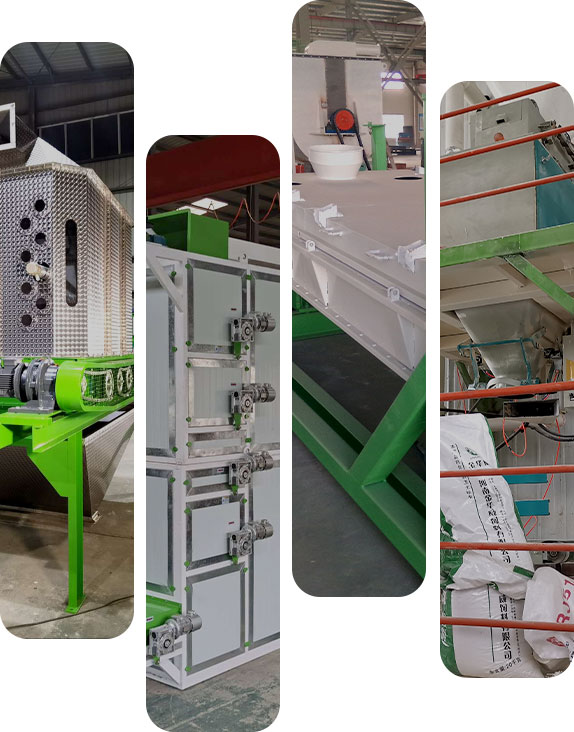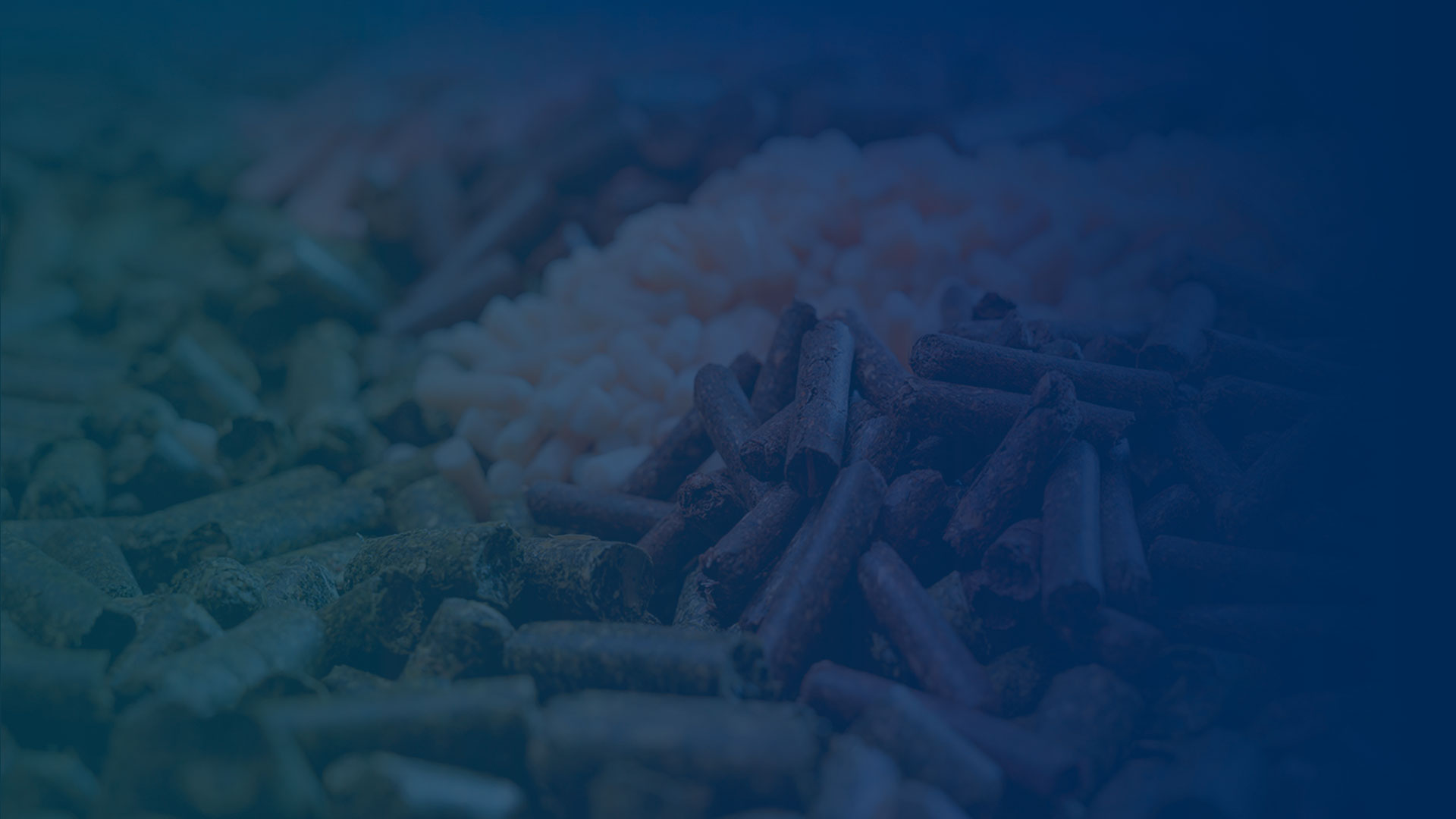
Post-pelletization processing is critical to ensure the final quality of the pellets. It is also an essential stage to produce high-quality pellets that meet industry standards and market demand.
Learn MoreA process critical to refining, preparing pellets for end use and meeting market standards. A coordinated effort between various equipment is used to improve the durability, size and consistency of pellets and to prepare them for storage or transportation.
RICHI Machinery offers a complete range of core and auxiliary equipment for pelletizing solutions.

Lowers pellet temperature and stabilizes them to prevent moisture buildup and spoilage.
Reduces large pellets to smaller, uniform sizes suitable for different applications.
Removes fines and ensures only consistent, high-quality pellets are packaged.
Packages the pellets for easy storage and transport, ensuring the pellets remain intact during delivery.


What kind of pellet plant do you want to establish?
How many tons per hour about this plant you want to build?
Where is this pellet plant going to be built?
When do you plan to start the operation?
Cooling is crucial after pelletizing to ensure the quality, durability, and safety of the produced pellets. Here’s why it matters:
By incorporating an efficient cooling system, such as a counter-flow cooler, pellet production lines ensure high-quality pellets that are safe and long-lasting.
A crumbler in post-pelletizing is a machine used to reduce the size of large pellets into smaller, uniform pieces without destroying their structure. This process is particularly important when producing feed for young animals, such as chicks or piglets, which require smaller, easily consumable feed particles.
The crumbler works on the principle of controlled crushing. It consists of rollers with adjustable gaps through which the pellets pass after leaving the pellet mill. As the pellets move through the rollers, they are gently crushed to the desired size. The adjustable gap allows precise control over the size of the crumbled particles, ensuring consistency and meeting specific nutritional needs.
By preserving the integrity of the feed while reducing its size, the crumbler enhances feed digestibility and facilitates better nutrient absorption for animals, especially those with smaller mouths or developing digestive systems. This makes it an essential part of the feed production process in many operations.
A screening machine plays a critical role in improving pellet quality by ensuring that only pellets meeting the desired size and consistency are included in the final product. Here’s how it contributes to quality enhancement:
By removing irregular particles, reducing dust, and ensuring uniform pellet size, a screening machine enhances feed quality, storage, and marketability while ensuring animals receive nutritionally consistent feed.
If pellets are not cooled properly, several issues can arise that affect both their quality and usability. Hot pellets retain excess moisture, making them prone to deformation, breakage, and microbial growth, which reduces their shelf life and storage stability. Additionally, improperly cooled pellets may stick together, causing handling and packaging problems. High residual heat can also affect pellet hardness, leading to inconsistent durability. Overall, inadequate cooling compromises the efficiency of the production process, the quality of the pellets, and their suitability for storage and transport. Proper cooling is essential to ensure pellets are durable, uniform, and ready for long-term use.
Crushing is needed if varying pellet sizes are required for specific applications.
Sieving plays a critical role in ensuring the final product quality in feed production by controlling particle size and removing unwanted materials. Here's how it contributes:
Sieving ensures feed is free from impurities, uniform in size, and suitable for pelletizing or direct use. This step enhances not only the quality of the final product but also the efficiency and safety of the entire production process.
Baling is critical for logistics because it significantly improves the efficiency and cost-effectiveness of transporting and storing materials. By compressing loose, bulky items like hay, straw, or agricultural residues into dense, manageable bundles, baling reduces the volume these materials occupy, allowing for more efficient use of storage space and transportation capacity. This compression not only lowers shipping costs but also minimizes handling time and the risk of material loss during transit. Additionally, tightly packed bales ensure stability and safety, reducing the likelihood of damage or spillage, which is particularly important in large-scale supply chains where reliability and consistency are key. Baling, therefore, transforms logistics operations by optimizing space, reducing waste, and enhancing overall operational efficiency.
Yes, fines can often be reprocessed into new pellets.
Proper post-processing plays a critical role in ensuring pellet durability by stabilizing their structure and preserving their quality for storage and use. After pellets are formed, they are still warm and may have residual moisture that can compromise their integrity. Cooling them immediately after extrusion helps solidify their structure, reducing brittleness and preventing deformation. Additionally, the drying process removes excess moisture, which not only strengthens the pellets but also protects them from mold or degradation during storage.
Polishing during post-processing enhances the surface smoothness, making the pellets less prone to cracking or chipping during handling and transportation. If a coating is applied, it adds a protective layer that further improves their resistance to physical stress and environmental factors, such as humidity. Together, these steps ensure that the pellets maintain their shape, durability, and nutritional value over time, making proper post-processing essential for high-quality pellet production.
If you need further information, please contact us

Note: Pellet production is a continuous and complex process, requiring many equipment to complete the production from raw materials to finished pellets. Therefore, it is suitable for commercial projects but not for personal use.

RICHI stick to the service principle is: We are focusing on your future, your future is our future!
© HENAN RICHI MACHINERY CO., LTD 1995-2025